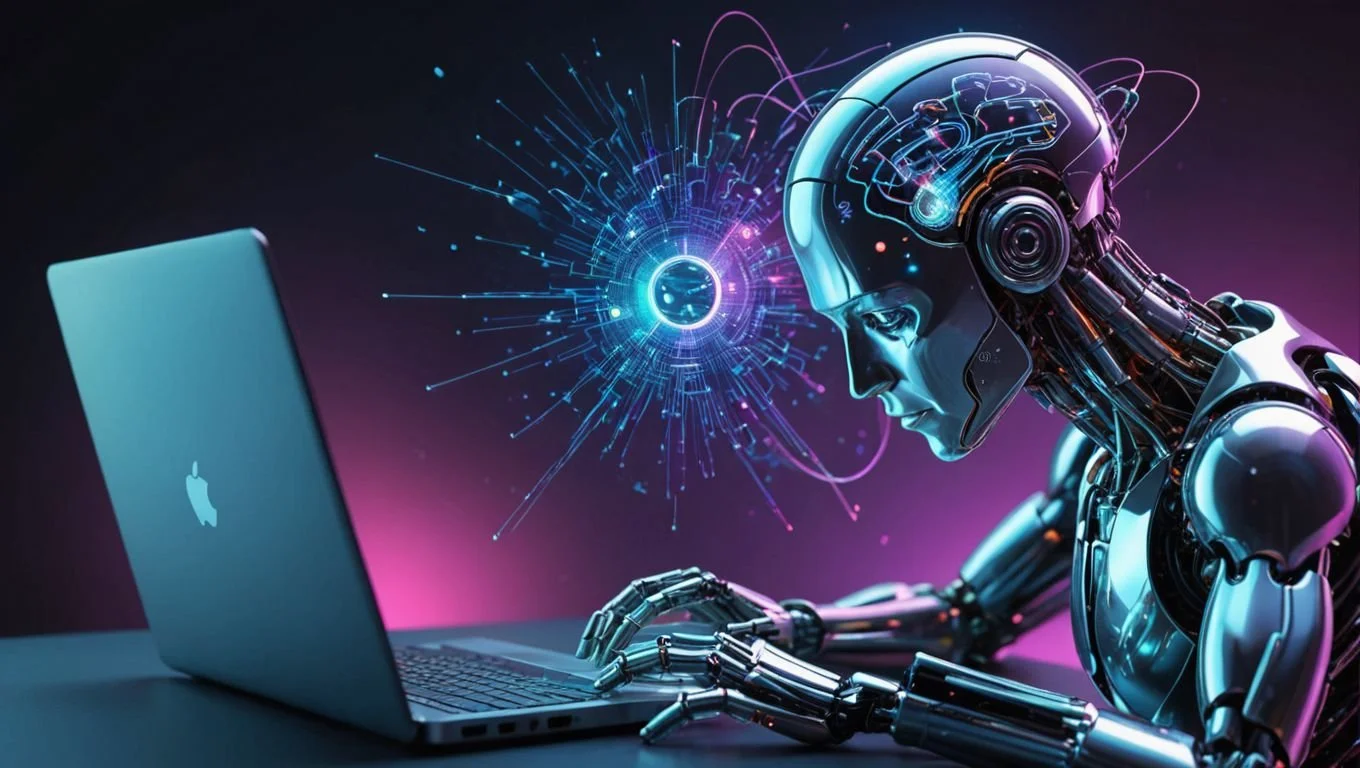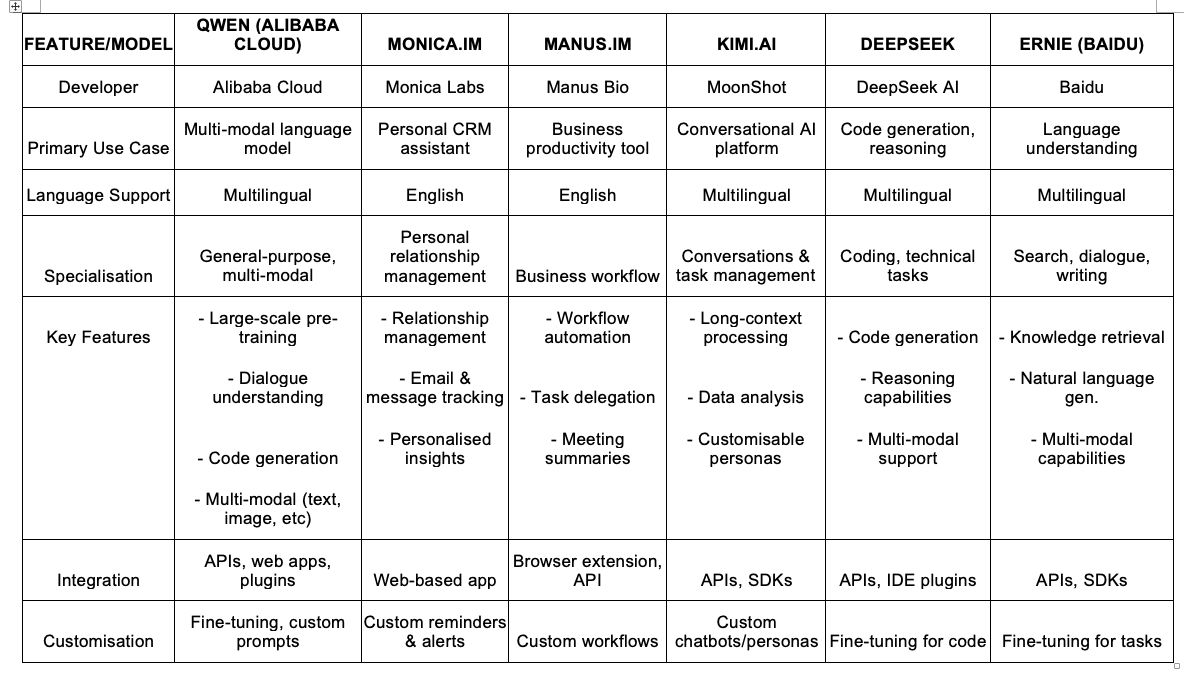generative Artificial intelligence
Image created in the Monica platform using Stable Diffusion XL 1.0
advanced gen AI tools for workflow optimisation
Introduction
On 21 February 2023, I posted a piece titled “The Future of Law: Exploring the Benefit and Challenges of Integrating Artificial Intelligence in Legl Practice” co-written with ChatGPT Generative Pre-trained Transformer.
2 years later, Generative AI has advanced so fast that it is now a game-changer for how lawyers will utilise Gen AI tools in their legal practice. The benefits I demonstrated in 2023 is now considered as the basics!
Gen AI tools can optimise legal workflows by enhancing research, writing, and analysis for legal professionals.
It seems likely that combining multiple Gen AI tools, such as DeepSeek V3 for research and Claude Sonnet 3.7 for arguments, boosts efficiency while complementing human judgment. Agentic AI like Manus takes legal writing to another level.
The evidence leans toward Gen AI not replacing human expertise, focusing instead on strategy and client outcomes.
Ethical considerations as to the responsible Gen AI use must be paramount.
Here, I briefly touch on using Gen AI tools for workflow optimisation.
Why use generative ai?
Gen AI is transforming the legal field, making tasks like document analysis and legal drafting faster and more accurate.
Being able to use advanced Gen AI tools to optimise legal workflows and to assist in creating reliable and accurate content may potentially give the legal practitioner a strategic edge.
Various Gen AI tools serve specific legal needs. For instance, DeepSeek V3 and R1 are great for analysing large document volumes, while GPT-4o and GPT-4.5 excel in summarising and creating initial drafts of legal documents. Tools like Claude 3.7 Sonnet and DeepClaude are optimised for generating and analysing legal documents, and Gemini 2.0 Pro and Llama 3.1 handle broad research tasks. Interestingly, DALL.E 3 can even create visual representations for legal concepts, adding a creative dimension.
For different legal tasks, specific Gen AI tools could be used depending on the outcomes sought:
Legal case reviews: DeepSeek V3, DeepSeek R1, Grok-2, or Grok-3. For specialist queries, use for example Lexis + or CoCounsel.
Drafting chronologies: GPT-4o, GPT-4.5, or Gemini Advanced.
Analysing evidentiary materials: DeepClaude, Claude models, and Manus.
Drafting legal arguments: Claude Sonnet 3.7, and Manus.
Combining these tools, like using DeepSeek for initial research and Claude for arguments, can maximise efficiency, ensuring a seamless workflow.
Gen AI tools enhance legal workflows by improving productivity and accuracy, but they should complement, not replace, human judgment. This allows legal professionals to focus on strategy and client outcomes, staying competitive in a dynamic field.
A cautionary approach has to be borne in mind when relying on Gen AI to undertake legal research. The results are often inaccurate. As an analysis tool, it is effective but the challenge for legal practitioners will be to formulate the Gen AI policies for their ethical, responsible, and secure use of Gen AI technologies.
Comprehensive Analysis and Detailed Insights
Gen AI in Legal Workflows
There is no turning back. Generative Artificial Intelligence is revolutionising the legal profession by streamlining processes that were once labor-intensive and time-consuming. Specialised AI tools are now being offered by Lexis + AI, CoCounsel, Smokeball AI, Cicero.com.ai, AI Legal Assistant, Harvey, and Spellbook, to name a few.
Legal professionals, including law students, academics, lawyers, mediators, and dispute resolution practitioners, can now leverage Gen AI to enhance efficiency, accuracy, and creativity. These Gen AI tools should be use to complement traditional research techniques rather than the the primary approach.
It is, therefore, important to gain insights into selecting the right Gen AI tools for general and specific legal tasks.
There are practical applications by using Gen AI in content creation for legal professionals.
Detailed Overview of Gen AI Tools Available
A variety of Gen AI tools are now publicly available for general tasks and to a limited extent specific legal research, each with unique strengths tailored to legal workflows.
Below is a table summarising these tools and their potential general applications:
These tools allow legal professionals to experiment and find the best fit for their specific needs, enhancing productivity across various tasks.
Specific legal workflow tasks and Gen AI tools
The guide provides potential uses of Gen AI tools in general and specific legal tasks, ensuring optimal efficiency. The following table outlines these possibilities:
These Gen AI tools ensure that legal professionals can select the most appropriate tool for each task, enhancing both speed and accuracy. However, the legal practitioner must be conscious of the permitted uses and prohibited uses, eg generating final legal advice without human review, uploading confidential client information to non-secure AI platforms, permitting the processing of sensitive information.
Gen AI tools can produce a vast amount of information in a very short time, but its accuracy must be validated particularly if references are made to Statutes and case law. Inevitably, there are wrong. These errors, left unchecked, will affect the lawyers’ reputation and risks being disciplined by the legal regulators.
Combining Gen AI tools for maximum efficiency
To achieve the best results, think careful about how best to combine multiple Gen AI tools to create a seamless workflow.
For example, a typical workflow might involve:
Using kimi.ai, DeepSeek V3 for initial research to quickly analyse large document sets.
Employing GPT-4.0 or Gemini Advanced to draft chronologies, organising events in a clear and concise manner.
Utilising Claude 3.7 Sonnet for crafting legal arguments, ensuring persuasive and well-structured content.
Applying Perplexity-reasoning to analyse and compare legal submissions, assessing their strength and reasoning.
This integrated approach enhances efficiency, allowing legal professionals to handle complex tasks with greater speed and accuracy.
However, I emphasise that Gen AI should complement, not replace, human judgment, enabling professionals to focus on strategy, advocacy, and client outcomes in a competitive landscape. It is critical to always validate the outcomes.
Gen AI Users must also be conscious of data privacy and security in a controlled or non-controlled environment. The Harman undertaking is also a longstanding legal rule that applies to litigating parties in Australian courts and tribunals.
Such information are prohibited to be entered into any Gen AI tool, including but not limited to information the subject of suppresions orders, materials produced on subpoena, and any statutory prohibition.
Courts are also issuing practice directions on the use of AI in the courtroom. Check these requirements.
Practical Application
Gen AI tools offer significant benefits in optimising legal workflows, improving productivity, accuracy, and creativity.
By selecting the right Gen AI tools and leveraging their strengths, legal professionals can stay ahead in a dynamic field.
Tools are only as good as the person using them, so it is important to exercise human judgment, maintaining ethical obligations, and ensuring that Gen AI supports, rather than supplants, the expertise of legal practitioners.
Gen AI's practical application is boundless. I use Grok 3 to extract and summarise key points from an article I am writing with the aide of agentic AI Manus, ensuring the information is accurate and up-to-date.
Recent discussions, such as those found on Alsett's article on Grok 3 and Foytech's blog on Grok 3, highlight Grok 3's capabilities in processing and analysing legal documents, reinforcing its relevance. As highlight by Sequoia, the AI ecosystem now looks very different and their article “Generative AI’s Act o1” predicts what’s on the horizon.
Gen AI can now enhance content creation for legal professionals, mirroring the efficiency gains seen in legal workflows. All legal practitioners must, however, remember that the paramount duty is to the court and the administration of justice. The use of Gen AI does not absolve practitioners of their professional or ethical obligations.
Eastern v Western approach to Gen AI tools
The race is on between developers of Gen AI tools from the East to the West. Like Ying and Yang, effective use of both of these developed Gen AI tools will enhance the desired outcomes, but you will need to learn what each is really good for.
Below are two tables that I use Alibaba Qwen 2.5-Max to generate. The results may be bias. I have tested most of these Gen AI tools and subscribe to several.
Eastern (Chinese) developed Gen AI tools
Western developed Gen AI tools
AI’s influence on society is profound. 2025 will be the year where AI developers will showcase their best tools. You should try them all and develop your own workflow from general use to specialised use.
Stanford University Human-Centred Artificial Intelligence (HAI) released its 2025 AI Index Report that analyses the evolving landscape of AI. Can you afford not to learn and use these Gen AI tools?
ACKNOWLEDGEMENTS
I use Perplexity Pro, Monica, Manus, kimi.ai, Claude 3.7 Sonnet, xAI (Grok-2 Grok-3), ChatGPT Plus (GPT-4o, GPT-4.5), Gemini, Llama, DeepSeek (V3, R1), Copilot, Bing Chat, Scispace, STORM, Ernie, DALL-E, and many more. The future, however, lies in the power of natural human voice. This is where sesame.com is so brilliant with Maya and Miles. You have to converse with them to believe it!
In publishing this web page, Grok 3 was deployed and I acknowledge its contribution.




